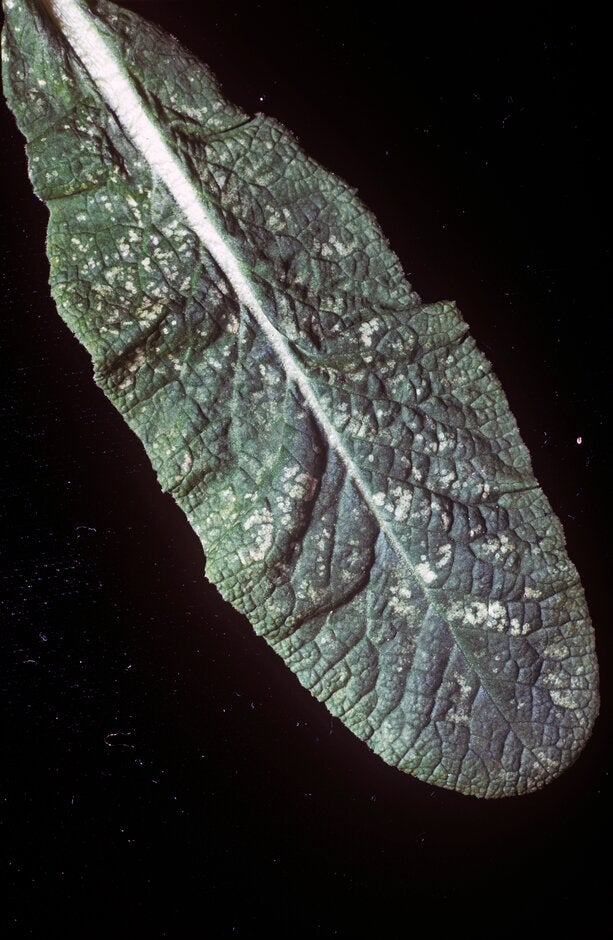
Quick facts
Common name - Glasshouse leafhopper
Scientific name - Hauptidia maroccana
Plants affected - Many glasshouse vegetables and ornamental plants including tomato, peppers, aubergine, cucumber, fuchsia, pelargonium and Streptocarpus. Outdoor plants, such as polyanthus, foxglove and Nicotiana are also hosts
Main symptoms - Coarse pale spotting on upper leaf surface. Leafhoppers may be seen on the underside of leaves
Most active - April to September but all year round in glasshouses
What is glasshouse leafhopper?
The leafhoppers are a family (Cicadellidae) of sucking true bugs, there are more than 180 species found in Britain. They can jump or fly short distances and most do not feed on or cause noticeable damage to garden plants. Find out more about British species from .
Glasshouse leafhopper is a 3 mm long pale green species.

Symptoms
- A coarse pale mottling appears on the upper leaf surface of a wide range of plants in greenhouses, on houseplants and in gardens (similar mottling on sage, rosemary and other herbs is likely to be due to the sage or Ligurian leafhoppers )
- The spots can join together, giving the leaves a chlorotic appearance that could be mistaken for a mineral deficiency
- Damaged leaves will remain discoloured
- Adult glasshouse leafhoppers are 3 mm (about 1/8 in) long and pale yellow with grey markings. They are broadest at the head end and taper to a point behind
- Adults jump off leaves and fly short distances when disturbed
- The creamy white, wingless nymphs are less active and can be easier to spot
- White cast skins shed by the immature nymphs can often be found attached to the underside of damaged leaves (aphid skins are usualy found on the top surface of leaves)
Management
- Often leafhoppers do not affect the growth or vigour of plants and so can be tolerated, they are part of the a healthy garden can support
- Encourage predators and other natural enemies of leafhoppers, in the garden, such as birds , ladybirds , wasps and ground beetles
Biology
- Leaf mottling can be caused by the feeding activities of the adults and nymphs, which live mainly on the lower leaf surface
- This leafhopper has several generations during the and can remain active throughout the year on indoor plants
- Eggs are laid in the leaf veins and hatch into wingless creamy white nymphs
- The nymphs shed their outer skin five times as they grow and finally become adults
- In midsummer, the life cycle can be completed in six weeks but takes several months in the winter






